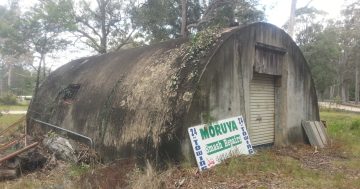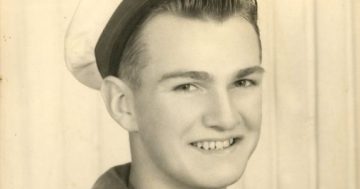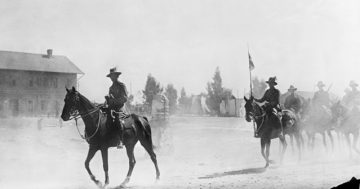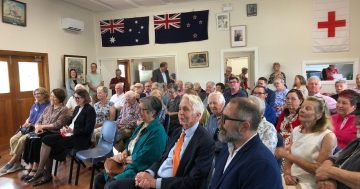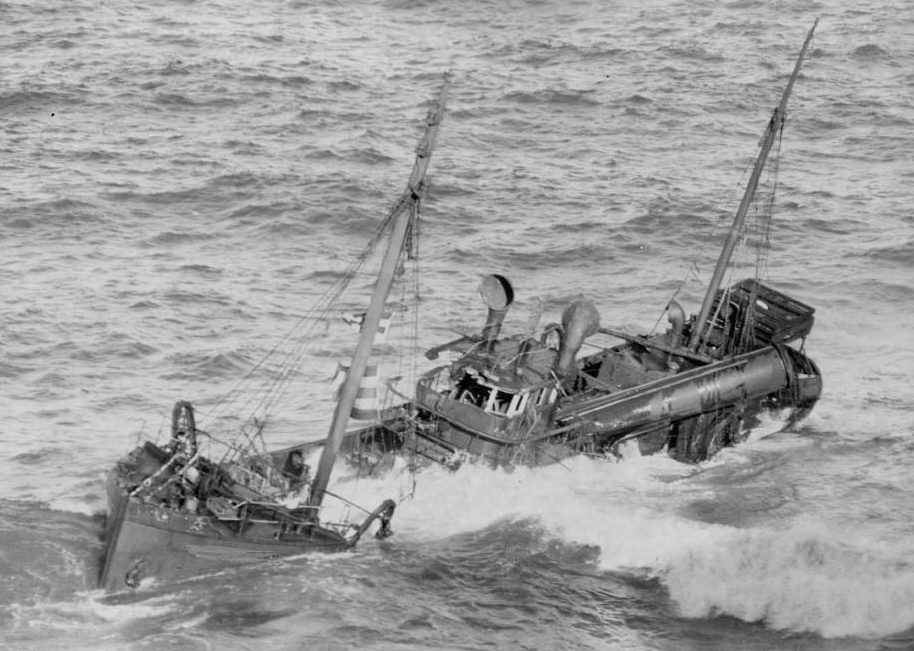
The Dureenbee comes to rest north of Batemans Bay after the attack. Photo: Supplied.
During World War II a Japanese submarine slinking its way along the Far South Coast fired on an unarmed fishing trawler off Moruya, resulting in the tragic deaths of three men onboard.
Many do not know a Japanese submarine killed people that far south along Australia’s eastern coastline, but this little-known story of local wartime history will be remembered in a new project.
According to the NSW government, the Dureenbee was hit by 12 shells from the I-175’s 4.7-inch deck gun and its two 13-mm machine guns on 3 August 1942.
This damage meant the 223-tonne steamer was abandoned and it hit rocks north of Batemans Bay. Along with the three crew who died, three were also injured.
Moruya Remembers Committee volunteer Gary Traynor said a new plaque was being organised for the town’s war memorial that would represent the members of the merchant navy who were part of the war, in particular the role of these three men, “because otherwise they’ll just be forgotten”.
He said they were men from Sydney who were “simply doing their job” – 51-year-old Chief Officer Alexander Reid, 49-year-old Able Seaman Archibald McPherson and 52-year-old Able Seaman Arthur John Scoble. They are buried at Moruya Cemetery.
But he said there appeared to be no real attempts from the sub to actually sink the trawler, as it had been shooting above the waterline. To sink a boat, a submarine would usually shoot it below the waterline.
“It’s one of those mysteries of war, I guess,” he said.
Moruya Country Markets leapt at the chance to help the project and recently donated $1000 towards the plaque.
“It’s heartbreaking to see all these people that did fight and serve our country; they’re slowly passing on now,” Moruya Market Committee secretary Kay Nash said.
“It’s an absolute honour and a privilege for the Moruya Markets to be able to do this, to give these three men a plaque for people to remember them by.
“I can’t wait to go and unveil it; I’m very excited about it.”
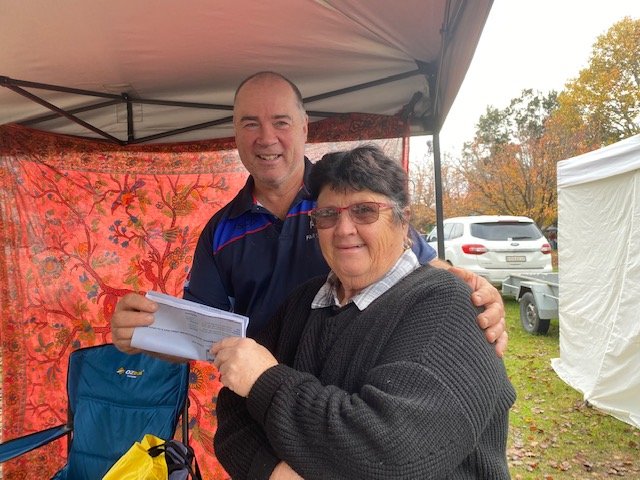
Gary Traynor is presented a cheque of $1000 by Kay Nash from the Moruya Country Markets to help with the Dureenbee plaque. Photo: Moruya Country Markets.
The plaque will be unveiled on the 80th anniversary of the men’s deaths, which descendants of the Dureenbee’s captain will attend.
The war memorial itself was only officially opened last Anzac Day.
“Until we built this war memorial, these men were largely a gap in history,” Mr Traynor said.
Mr Traynor has a wealth of knowledge regarding local WWII history. He tells other local stories, including how the 14th Battalion of the Volunteer Defence Corps had been stationed at Braidwood. One of their tasks involved sitting at Pooh Bear’s Corner on Clyde Mountain, waiting for the Japanese to arrive so they could blow up the road.
He said he hopes another plaque at the War Memorial will commemorate the Volunteer Defence Corps.
Also, further south, he said on Christmas Day 1944 a German U-boat that was “a long way from Germany” sunk a US ship off Wallaga Lake, resulting in the death of two US men.
“There’s so much about history that people don’t know,” he said.
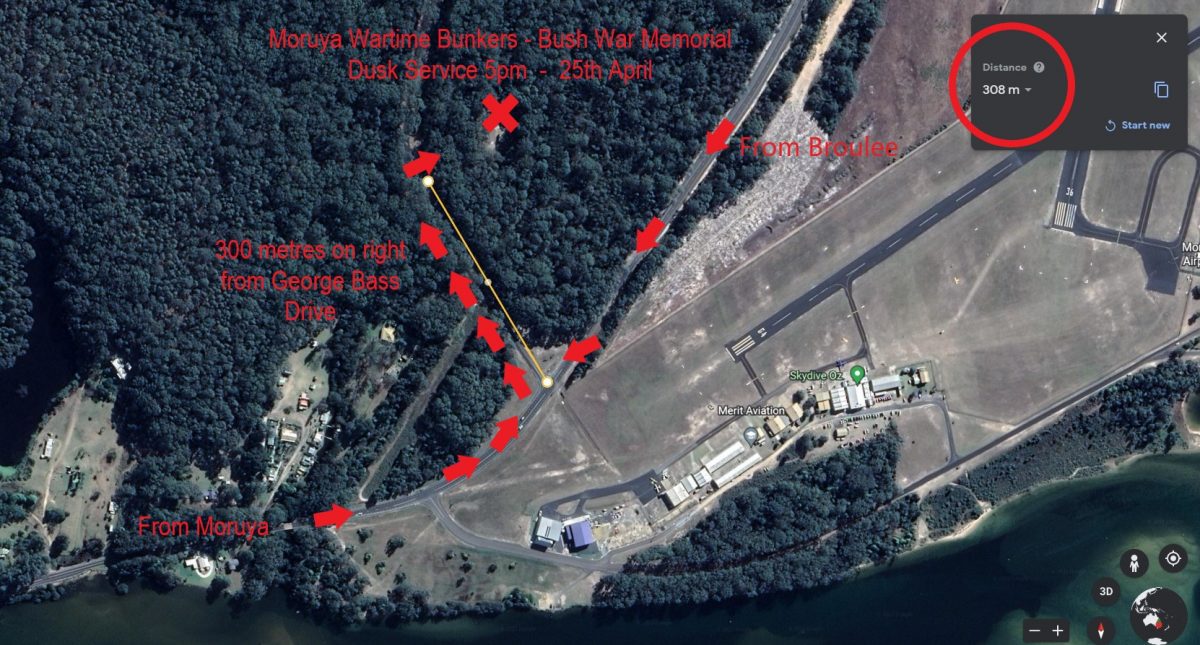
This image shows the location of Moruya’s Bush War Memorial. Image: Google Maps/Supplied.
As for the Dureenbee, he said the trawler drifted north and wrecked off Batemans Bay’s North Head, coming to rest on Richmond Bombora. Parts of it were salvaged by scavengers over the years, but the wreck is now a “rusted hulk”.
The public is welcome to attend the plaque unveiling on 3 August 2022 at 4:30 pm at the War Memorial.
To get there, drive along George Bass Drive and turn onto Donnelly Drive, opposite the Moruya Airport, then it is 300 m on the right. The image above shows the location.







